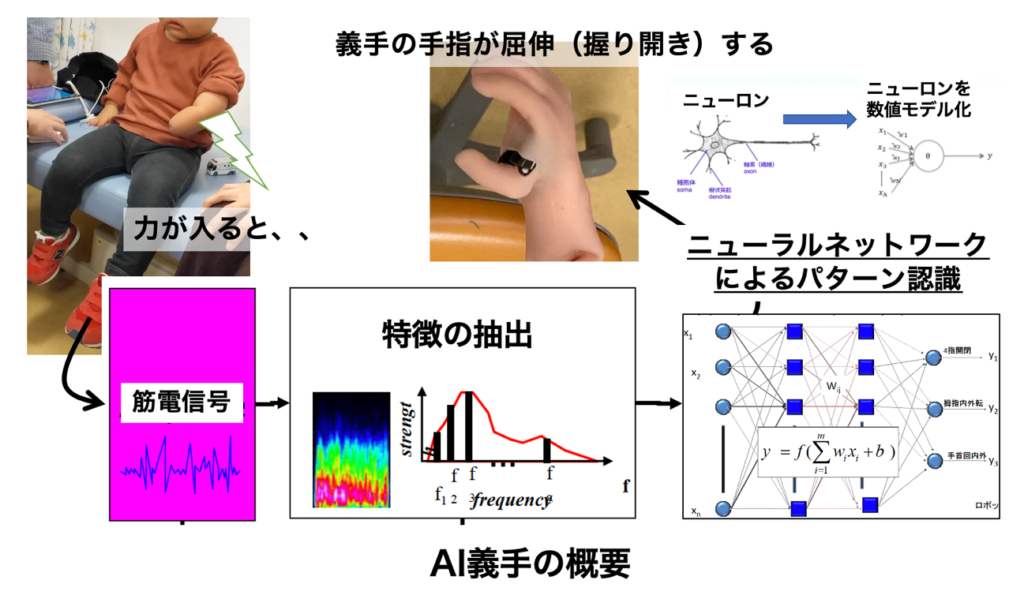About the Research: For children with congenital upper limb dysplasia, myoelectric prostheses provide a “moving hand” that controls prosthetic fingers using signals from muscles at the disconnect end. Since the signal patterns are different for each individual, we are considering developing a myoelectric prosthetic hand equipped with AI technology that allows the prosthetic hand to learn a person’s movements (the prosthetic hand adapts to its own movements), so that children can have a more familiar myoelectric prosthetic hand.
Research Details: Myoelectric prosthetic hands capture the signals of muscles remaining at the disconnected end as surface electromyograms, and use these to control the fingers of the prosthetic hand. Conventionally, a person needs to be trained to move the muscles on the electrodes of the prosthetic hand (matching his/her own movements to the prosthetic hand). However, since each patient has a different surface EMG pattern, we will consider incorporating AI technology that allows the prosthetic hand to learn the movements of the person (the prosthetic hand matches its own movements).
Since the surface electromyography pattern differs from patient to patient, a system will be installed that allows the prosthetic hand to learn a person’s movements by recognizing the pattern. When force is applied, the system extracts the characteristics of the myoelectric signals and recognizes patterns using a neural network. The system identifies the muscle activity depending on how much force is applied to the hand, and the prosthetic hand moves as it does. The microcontroller learns the characteristics of the myoelectric pattern when the patient imagines “grip” and generates the “grip” movement of the prosthetic hand, so the myoelectric prosthetic hand is able to perform the grip movement when the patient intuitively imagines “grip”. Since the prosthetic hand itself learns a person’s movement habits and the prosthetic hand moves with those habits, the prosthetic hand becomes more personalized in terms of function. This concept should also be called an AI prosthetic hand because it incorporates elements of machine learning.




